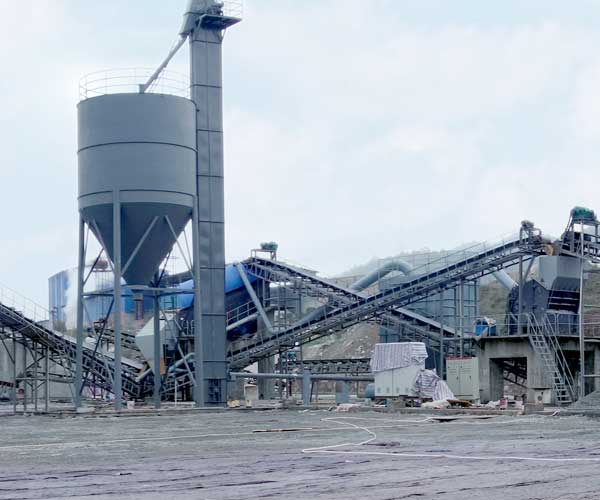
Lime, also known as quicklime.Lime is produced through a complex chemical process that involves high temperatures and requires specific equipment to carry out the various steps involved in the production process. This article aims to discuss the lime production process and the equipment required to produce high-quality lime.
24 Online Service
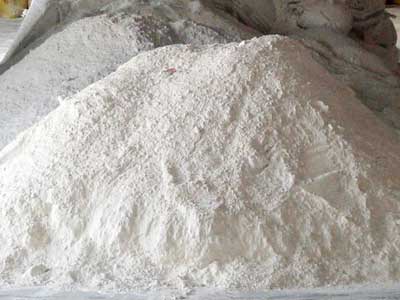
Lime processing is a complex and important industrial process that involves the transformation of limestone into a valuable material for a wide range of applications. Lime, or calcium oxide (CaO), is a versatile chemical that has been used for centuries in various industrial, agricultural, and construction applications. Lime is an essential component in the production of cement, steel, and other materials, and is also used in the treatment of water and waste, as well as in agriculture for soil improvement and crop production.
Lime processing begins with the mining and quarrying of limestone, which is a sedimentary rock composed mostly of calcium carbonate (CaCO3). Limestone deposits are found in many parts of the world and are often mined from large quarries or underground mines. The limestone is then transported to the processing plant, where it is crushed, ground, and screened to the appropriate size for further processing.
The first step in the processing of lime is calcination, which involves heating the limestone in a kiln to drive off carbon dioxide (CO2) and produce calcium oxide (CaO). The kiln is a large, cylindrical furnace that is typically fueled by natural gas, coal, or oil. The limestone is fed into the kiln at one end and gradually moves down towards the other end as it is heated to temperatures ranging from 900°C to 1300°C. During this process, the limestone undergoes a series of chemical and physical changes, including the decomposition of calcium carbonate to calcium oxide and the release of carbon dioxide.
After calcination, the resulting lime is then hydrated, which involves adding water to the calcium oxide to produce calcium hydroxide (Ca(OH)2). This reaction is exothermic and can produce significant heat, which must be carefully managed to prevent thermal damage to the equipment. Hydration can be carried out using a variety of methods, including batch hydration, continuous hydration, and slaking.
The resulting hydrated lime can then be processed further into a range of products, including quicklime, slaked lime, and lime putty. Quicklime, also known as burnt lime, is produced by heating the hydrated lime to temperatures ranging from 900°C to 1200°C. This process drives off any remaining water and produces a highly reactive and caustic material that is used in a variety of industrial applications, such as steelmaking, paper production, and waste treatment.
Slaked lime, also known as hydrated lime, is produced by adding water to the quicklime. This reaction produces a fine powder that is used in a range of applications, including soil stabilization, water treatment, and the production of mortar and plaster. Lime putty is a traditional material made by slaking quicklime with water and allowing it to mature for several months. The resulting putty is a smooth and workable material that is used in the restoration of historic buildings and other cultural heritage sites.
The properties of lime make it a versatile material that is suitable for a wide range of applications. Lime is highly reactive and can be used as a catalyst in a variety of chemical reactions, such as the production of biodiesel and the treatment of waste gases. Lime is also an effective absorbent and can be used to capture and neutralize acidic gases and pollutants, such as sulfur dioxide (SO2) and nitrogen oxides (NOx).
In agriculture, lime is used to improve soil quality and enhance crop production. Lime can be applied to acidic soils to raise the pH level and reduce soil acidity, which can improve the availability of nutrients for plant growth. Lime is also used as a fertilizer to supply calcium and magnesium to crops and improve soil structure and water-holding capacity.
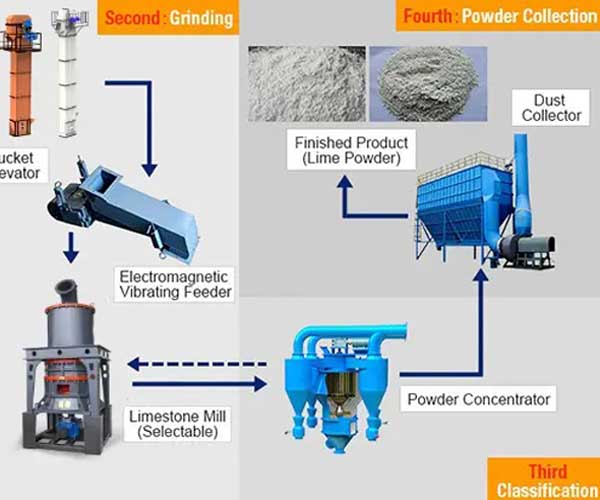
Lime production involves a process known as calcination, which is the decomposition of calcium carbonate (CaCO3) into calcium oxide (CaO) and carbon dioxide (CO2). The calcination process involves heating limestone, which is the primary source of calcium carbonate, to temperatures ranging from 900 to 1100 °C in a kiln. The temperature required for calcination depends on various factors such as the type of limestone, the kiln design, and the desired quality of lime.
The calcination process involves three main stages: preheating, calcination, and cooling. During preheating, the limestone is heated to temperatures ranging from 700 to 900 °C to remove any moisture content and prepare it for the next stage. In the calcination stage, the limestone is heated to temperatures ranging from 900 to 1100 °C, where it undergoes chemical decomposition, releasing carbon dioxide gas and forming calcium oxide. The cooling stage involves quenching the lime to prevent it from reabsorbing carbon dioxide and converting back into calcium carbonate.
The lime produced through this process can be further processed into various forms such as hydrated lime, which is produced by adding water to the calcium oxide, or dolomitic lime, which is produced by calcining dolomite instead of limestone. The quality of the lime produced depends on various factors such as the purity of the limestone, the kiln design, and the control of the calcination process.
The production of high-quality lime requires specific equipment to carry out the various stages involved in the calcination process. The following are some of the equipment required for lime production.
The rotary kiln is the primary equipment used in the calcination process. It is a large cylindrical tube with a slope of about 3-5% and rotates on its axis at a speed of 1-2 revolutions per minute. The limestone is fed into the kiln through the upper end and is heated to temperatures ranging from 900 to 1100 °C as it moves down the kiln. The kiln is lined with refractory bricks to protect the steel shell from the high temperatures and the corrosive environment inside the kiln.
The burner system is responsible for providing the heat required for the calcination process. It is located at the lower end of the kiln and is designed to provide a controlled flame that heats the limestone to the desired temperature. The burner system can be fuelled by various sources such as natural gas, coal, or oil.
The cooler is a critical piece of equipment that is used to cool the lime after it is discharged from the kiln. The cooling process is crucial as it prevents the lime from reabsorbing carbon dioxide and converting back into calcium carbonate. The cooler is typically a counter-flow heat exchanger that uses ambient air to cool the lime.
The calcination process produces a significant amount of dust and other particulate matter, which can be harmful to the environment and the workers. Therefore, a dust collection system is required to capture and remove the dust and other particulate matter from the exhaust gases. The dust collection system typically consists of cyclones, bag filters, or electrostatic precipitators.
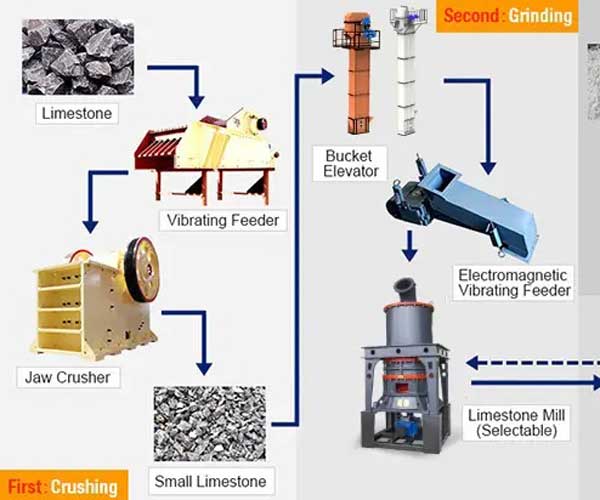
Lime is a versatile chemical that is used in a wide range of industrial processes. It is a critical ingredient in cement production, sugar refining, and many other industries. Lime processing plants play a vital role in the production of this essential chemical. In this article, we will explore the basics of lime processing plant operations.
Lime processing plants are industrial facilities that process limestone into lime products. Limestone is a sedimentary rock that is composed of calcium carbonate. Lime products are produced by heating limestone in a kiln to temperatures exceeding 900°C. The high temperature causes the limestone to undergo a chemical reaction that transforms it into calcium oxide or quicklime. The quicklime is then further processed into various lime products.
The lime products produced by lime processing plants have a variety of uses. Quicklime is used as a flux in steelmaking, as a soil conditioner, and in the production of various chemicals. Hydrated lime, a form of lime that is produced by adding water to quicklime, is used in water treatment, pulp and paper production, and in the manufacturing of construction materials.
Lime processing plant operations involve several steps. These include quarrying, crushing, screening, calcination, and hydration.
Quarrying: The first step in lime processing plant operations is quarrying. This involves the extraction of limestone from the earth’s crust. Limestone is usually obtained from open-pit mines, although some limestone deposits are located underground. The extracted limestone is then transported to the processing plant.
Crushing and Screening: The next step in lime processing plant operations is crushing and screening. This involves crushing the limestone into small pieces and then screening it to remove any large impurities. The crushed limestone is then stored in silos before being transported to the kiln for calcination.
Calcination: The calcination process involves heating the limestone in a kiln to temperatures exceeding 900°C. The high temperature causes the limestone to undergo a chemical reaction that transforms it into calcium oxide or quicklime. The quicklime is then further processed into various lime products.
Hydration: Hydration is the process of adding water to quicklime to produce hydrated lime. This is usually done by adding water to the quicklime in a hydrator. The hydrated lime is then processed into various lime products.
Quality Control: Quality control is an essential aspect of lime processing plant operations. The quality of the lime products produced by the plant must meet specific standards to ensure they are suitable for their intended use. Quality control involves testing the lime products for purity, particle size, and other parameters.
Environmental Considerations: Lime processing plant operations can have a significant impact on the environment. The mining and transportation of limestone can result in soil erosion and deforestation. The calcination process can result in the release of greenhouse gases, such as carbon dioxide. To minimize the environmental impact of lime processing plant operations, many plants use alternative fuels in their kilns, such as biomass and waste materials.
Lime is a versatile material that finds its use in various industrial applications, including construction, agriculture, and chemical processing. It is produced by burning limestone or dolomite, a sedimentary rock composed primarily of calcium carbonate or magnesium carbonate. The process of producing lime requires specialized equipment that can crush and grind the raw material into a fine powder.
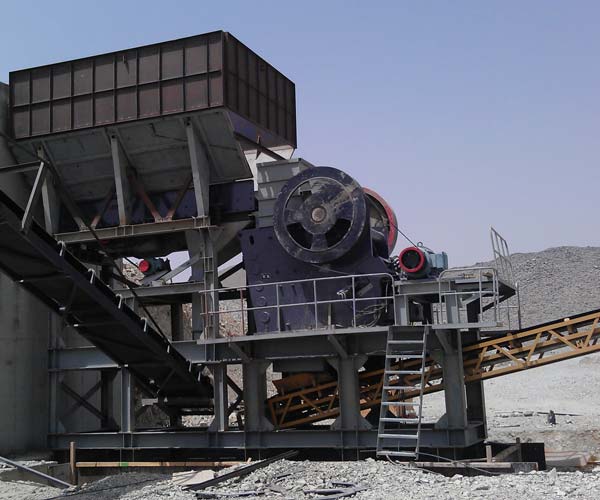
Jaw crusher is a primary crushing machine that is used to crush limestone or dolomite into smaller sizes. It is commonly used in the construction industry to produce gravel, sand, and concrete aggregate. Jaw crushers are designed to crush materials with a compressive strength of up to 320 MPa.
The main features of jaw crushers include a fixed jaw plate and a movable jaw plate. The fixed jaw plate is fixed to the front frame of the crusher, while the movable jaw plate moves back and forth relative to the fixed jaw plate. When the material is fed into the crushing chamber, it is crushed between the two jaw plates.
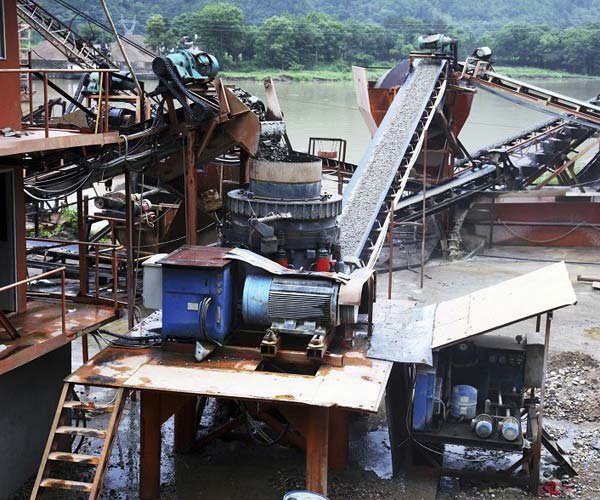
A cone crusher is another type of crushing equipment that is commonly used to produce lime. It is often used in the mining industry to crush materials such as ore, rock, and coal. Cone crushers are designed to crush materials with a compressive strength of up to 300 MPa.
The main features of cone crushers include a concave surface and a mantle surface. The concave surface is located on the bottom of the crusher, while the mantle surface is located on the top of the crusher. When the material is fed into the crushing chamber, it is crushed between the concave and mantle surfaces.
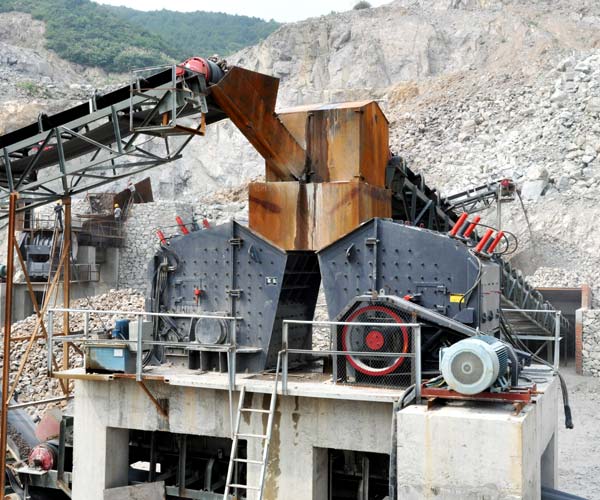
An impact crusher is a crushing machine that uses impact energy to crush materials. It is often used in the construction industry to produce gravel, sand, and concrete aggregate. Impact crushers are designed to crush materials with a compressive strength of up to 350 MPa.
The main features of impact crushers include a rotor, blow bars, and an impact plate. The rotor is the main rotating component of the crusher, while the blow bars are fixed to the rotor. The impact plate is located on the bottom of the crusher. When the material is fed into the crushing chamber, it is crushed between the rotor and the blow bars.
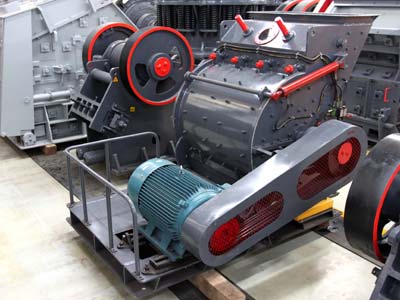
A hammer crusher is a crushing machine that uses high-speed rotating hammers to crush materials. It is often used in the mining industry to crush materials such as coal, rock, and ore. Hammer crushers are designed to crush materials with a compressive strength of up to 150 MPa.
The main features of hammer crushers include a rotor, hammers, and a grate. The rotor is the main rotating component of the crusher, while the hammers are fixed to the rotor. The grate is located on the bottom of the crusher. When the material is fed into the crushing chamber, it is crushed between the rotor and the hammers. The crushed material then passes through the grate and exits the crusher.
Lime processing is an essential activity for various industries, including construction, agriculture, and manufacturing. Lime is used as a key ingredient in several products, such as cement, paper, steel, and water treatment chemicals. However, the process of lime production can have significant environmental impacts, including air pollution, water pollution, and soil degradation.
One of the most significant environmental impacts of lime processing is air pollution. The primary source of air pollution in lime processing is the combustion of fossil fuels. The production of lime involves heating limestone at high temperatures, which requires a considerable amount of energy. In most cases, this energy is obtained from burning fossil fuels, such as coal, oil, and natural gas. The combustion of these fuels releases greenhouse gases, such as carbon dioxide and sulfur dioxide, into the atmosphere, contributing to global warming and acid rain.
Another significant environmental impact of lime processing is water pollution. The production of lime involves the use of large quantities of water, which can result in the contamination of nearby water bodies. The water used in lime processing can contain high levels of pollutants, such as heavy metals, acids, and salts, which can have detrimental effects on aquatic ecosystems.
The production of lime can also have a significant impact on soil quality. Lime is often used to neutralize acidic soils, which can improve crop yields and agricultural productivity. However, the overuse of lime can result in soil degradation and environmental damage.
Our Projects
Copyright © ZENITH, All Right Reserved.
